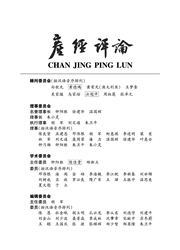

 中文摘要:
中文摘要:
基于2004-2013年中国大陆地区31个省份的人均流通产业增加值数据,运用探索性空间数据分析和空间面板数据模型,对中国省域流通产业发展格局的时空演变特征及其影响因素进行分析。结果显示:(1)东部地区各省份流通产业发展水平的绝对差异在逐渐扩大,相对差异先缩小再增大,而中西部地区流通产业发展水平的绝对差异和相对差异则是在保持平稳中出现下降;(2)省域流通产业发展具有显著的空间正相关关系,即在空间分布上具有集聚特征,而且这种集聚程度在观察期内有所增强;(3)局域空间相关性分析表明,中国省域流通产业发展水平同时存在空间上的依赖性和异质性;(4)通过空间误差模型对流通产业空间格局演变的影响因素进行计量分析发现,经济发展水平、城镇化率和交通基础设施水平对流通产业发展具有显著促进作用,其中城镇化水平是流通产业发展的最大驱动因素,而人力资本水平对我国流通产业发展的影响效应则尚未显现。
 英文摘要:
英文摘要:
The paper bases on the per added value of circulation industry of China's 31 provinces during2004- 2013,using exploratory spatial data analysis and spatial econometric model to research provincial circulation industry's spatial and temporal evolution characteristics and its influence factors. The study results indicate that:( 1) The absolute difference of development level of circulation industry gradually expands in eastern region,and the relative difference first shrinks and then enlarges again. The absolute difference and relative difference in central and western regions are steady decline;(2) Provincial circulation industry development presents significant positive spatial correlation,that is,characteristics of agglomeration exist on the spatial distribution,and the degree of agglomeration reinforces during the observation period;( 3) The local spatial correlation analysis and "hot spots"analysis have indicated that the level of provincial circulation industry development presents evident spatial heterogeneity patterns;(4) We quantitatively analyze the influence of factors on the spatial pattern evolution of circulation industry through the spatial error model and find out that:the urbanization rate and transportation infrastructure level have significant positive influence on industrial development,and urbanization is the primary driver,but the impacting effect of human capital level toward circulation industry development has not yet revealed.
 同期刊论文项目
同期刊论文项目
 同项目期刊论文
同项目期刊论文
 期刊信息
期刊信息
